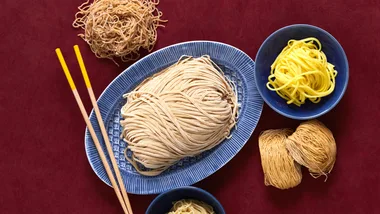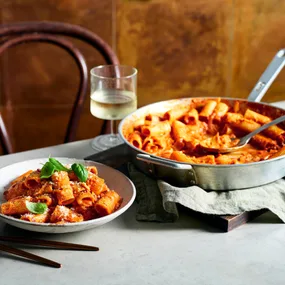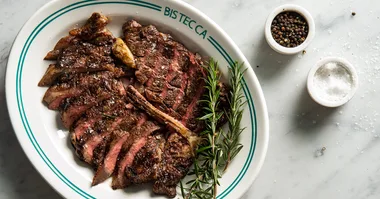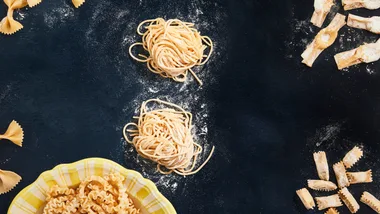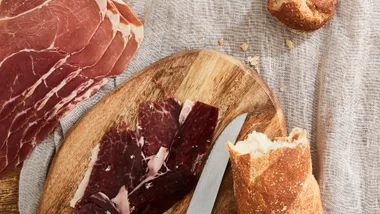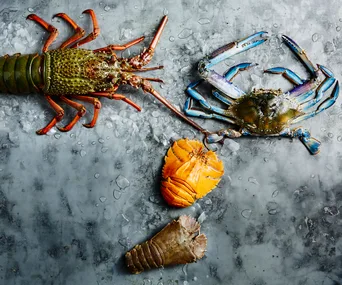Slow Food Melbourne once hosted a dinner on a salt lake on the outskirts of Mildura. Guests arrived to a brilliantly coloured show of blues and pinks as the setting sun was reflected on the white salt lake. A table stretching 50 people long had been set up on the lakebed and was laden with salt crystals and freshly cooked yabbies. These delicious crustaceans had come from dams and farms in the area, and we ate them with just a squeeze of lemon and a delicate mayonnaise.
The common yabby belongs to a whole family of freshwater crayfish which are native to Australian rivers, creeks, dams and waterholes. These crustaceans all have a hard shell, antennae and claws for digging (although not all of them burrow) and live in fresh water. They are nocturnal and their diet is mostly vegetarian; they feed on water weeds, decaying roots and leaves, insects and occasionally meat.
Three crayfish species are farmed commercially in Australia. The common dam yabby, the one I enjoyed so much in Mildura, is native to most of Victoria and some parts of New South Wales and South Australia; it has been introduced to Western Australia, where it is considered a threat to the marron industry. It’s a very hardy little creature, and in fact its scientific name, Cherax destructor, comes from the damage it is capable of doing to dam walls by burrowing. The humble yabby is capable of surviving long periods of drought by burrowing deep into the soil until it reaches the water table, where it stays moist and protected until the rains come again.
The redclaw (Cherax quadricarinatus) is native to the north-western river systems of Queensland. Then there’s the mighty marron (Cherax cainii), which is native to the rivers of the south-western part of Western Australia. It has also been introduced to Kangaroo Island, where it is being farmed.
All these freshwater crayfish vary greatly in size and colour, from dull green-brown to blue to dark brown or blue-black. (They shouldn’t be confused with marine rocklobsters, which are sometimes incorrectly referred to as crayfish, but which are an entirely different species.) To me, the marron is the most exciting of all these crayfish; it’s also the biggest. Marron look like giant yabbies but their shells are a brilliant deep blue or a dark blue-black. They’re impressive looking animals and quite beautiful.
Marron are usually sold live; I wouldn’t recommend you buy dead marron because their flesh degrades very quickly. They should have a shiny shell, look lively, have all limbs attached, and have no obvious damage to their shell. I recommend that you cook them on the day you buy them – the fresher they are, the better they will taste. If you have to keep them, store them in a well-ventilated wet box in a cool part of the house – somewhere below 20 degrees – but not in the fridge.
Live marron are available in all states of Australia except Victoria, where a Noxious Aquatic Species Permit is required for possessing the live animals; restaurants can obtain it but retailers can’t. This is because the fisheries department is concerned that live marron could be released into Victorian waterways, where they would compete with the native yabby. So those of us in Victoria can enjoy marron at their best only in restaurants.
Marron have quite a delicate flavour which I consider superior even to that of the rocklobster, and I like to cook them simply. For information on killing marron and other crustaceans humanely, refer to the RSPCA guidelines. Then bring a large pot of generously salted water to the boil, lower the dead marron in and simmer them gently for eight minutes for a 200gm marron or a little more if they are bigger. Remove them and allow them to cool slightly in their shells.Serve them with a homemade mayonnaise, or a celeriac rémoulade and watercress salad, or a Thai green mango salad dressed with chilli, lime juice, fish sauce and palm sugar.
I also recommend you try cooking and serving them in the shell – they look impressive and the shell lends flavour to the meat and the sauce. Try marron in a green curry, or stir-fried with ginger, red chilli and Thai basil, or barbecued: cut them through the middle, brush them with extra-virgin olive oil and sprinkle over some fresh herbs. Grill them gently on both sides, being careful not to overcook.
For Christmas dinner with the family this year, I’ll be serving marron garnished with ground toasted rice and fried shallots – gorgeous with a very special bottle of German riesling such as a classic JJ Prüm Spätlese. Merry Christmas.
 Antonia Pesenti
Antonia Pesenti

